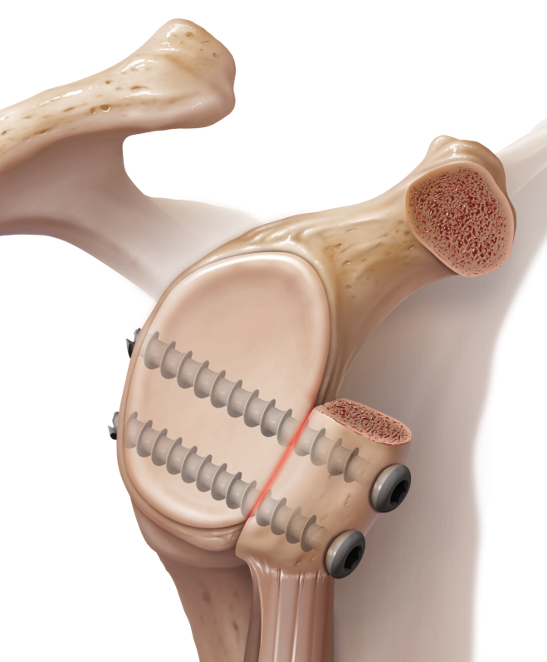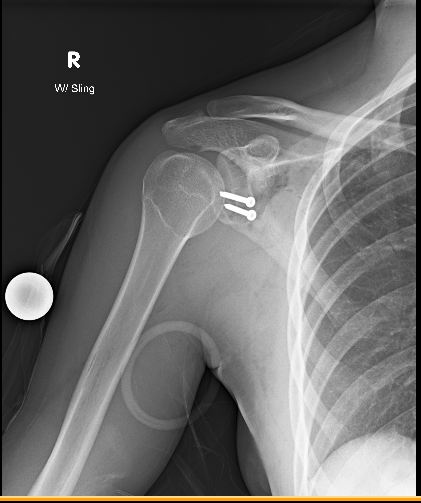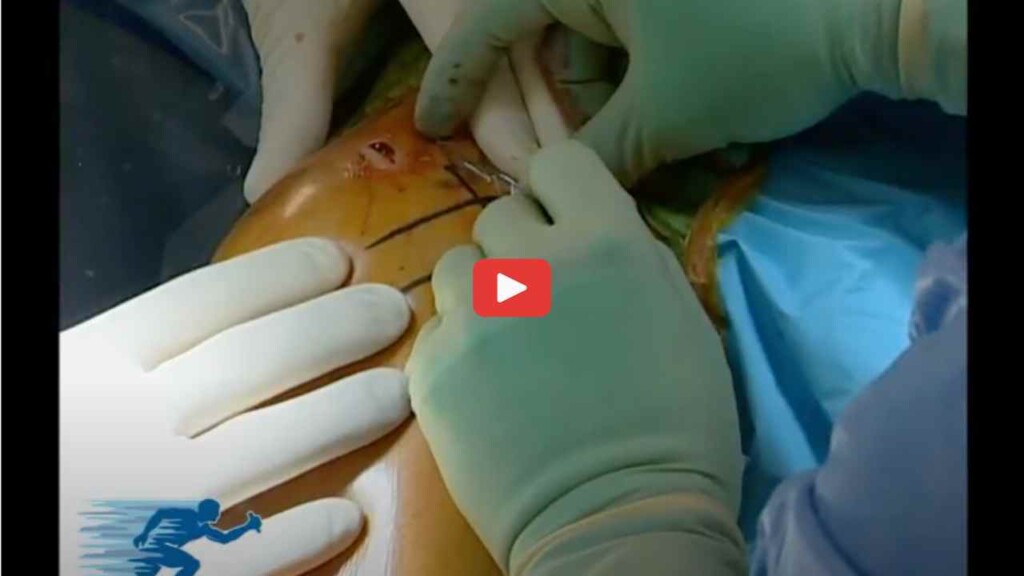An Overview of the Latarjet Procedure
The Latarjet procedure is becoming a preferred method of treatment for anterior shoulder instability. This treatment can be performed by Dr. Peter Millett as an open procedure or an arthroscopic technique. Patients receiving this treatment typically have significant bone deficiency from the front of the glenoid region, 20% or more. The most common causes of the deficiency are due to congenital deformity, trauma, or recurrent dislocation.
The Benefits of the Latarjet Procedure
There are three main effects that create stability through this procedure. First, the coracoid transfer restores the glenoid surface, eliminating any bony lesions that previously existed. Second, by reinforcing the inferior subscapularis and anterointerior capsule, the conjoined tendon provides dynamic stability when the arm is abducted and externally rotated. Lastly, the capsule is reattached to the bone graft inferiorly, thus increasing stability.
This procedure is successful approximately 80-95% of the time in eliminating recurrent shoulder instability and dislocations.
What to Expect After the Latarjet Procedure
A nerve block will be used during the Latarjet procedure. This allows for complete numbness in both the shoulder and arm during and immediately after the procedure. Typically, you will have numbness lasting for up to a few hours. Once the nerve block wears off, you will begin to feel soreness and pain.
The patient is required to wear a sling for about 4 weeks, so the repaired area can heal to the glenoid. Sutures will assist in the healing process.

Latarjet Procedure

Latarjet Post-Operative X-ray
Latarjet Post-Surgery Guidelines
The following guidelines are recommended:
- Do not remove your sutures – they will disintegrate by themselves. Follow the incision site care instructions that are given to you after your surgery.
- Apply ice to the incision site to help alleviate pain and swelling; protect your skin with a light cloth to avoid any burning of the skin.
- Wear your sling or brace until Dr. Millett specifies that you can remove it. You may take off the sling to dress or bathe, but be careful not to move your arm.
- Keep your arm immobile, and stabilized with your sling when sleeping.
- For pain management, Dr. Millett can prescribe pain medication. Please take the prescribed amount and follow the precautions listed for the drugs. You may also take over-the-counter medication to alleviate pain.
- If excessive pain, swelling, nausea, fever, numbness, or trouble breathing takes place, please call our office immediately.
- You will not be able to drive or operate heavy machinery for a minimum of 8 weeks. Dr. Millett will specify when you are able to drive again.
- Physical therapy, as prescribed by Dr. Millett, will begin approximately 8 weeks after surgery or until full strength is regained.
- Overhead sports may resume about 3 months following surgery.
- Patients can resume contact sports after 6 months.
After Latarjet Surgery: Driving, Physical Therapy, and Sports Timeline
You will not be able to drive or operate heavy machinery for a minimum of 8 weeks. Dr. Millett will determine when you can drive again. Physical therapy will begin approximately 8 weeks after surgery, and overhead sports may resume after 3 months. Contact sports can typically resume after 6 months.
Rehabilitation Following Latarjet Shoulder Surgery
Dr. Millett has specific guidelines for patients who have undergone a Latarjet procedure. These guidelines are broken down into various shoulder rehabilitation phases. Depending on the extent of your injury and surgery, the rehab guidelines may vary. These are simply protocols for all patients who have had Latarjet surgery. Dr. Millett will provide these guidelines during pre-operative procedures.
After the Latarjet Procedure
A nerve block will be used during the Latarjet procedure. This allows for complete numbness in both the shoulder and arm during and immediately after the procedure. Typically, you will have numbness lasting for up to a few hours. Once the nerve block wears off, you will begin to feel soreness and pain. The patient is required to wear a sling for about 4 weeks, so the repaired area can heal to the glenoid. Sutures will assist in the healing process. The following guidelines are recommended:
- Do not remove your sutures – they will disintegrate by themselves. Follow the incision site care instructions that are given to you after your surgery.
- Apply ice to the incision site to help alleviate pain and swelling; protect your skin with a light cloth to avoid any burning of the skin.
- Wear your sling or brace until Dr. Millett specifies that you can remove it. You may take off the sling to dress or bathe, but be careful not to move your arm.
- Keep your arm immobile, and stabilized with your sling when sleeping.
- For pain management, Dr. Millett can prescribe pain medication Please take the prescribed amount and follow the precautions listed for the drugs. You may also take over-the-counter medication to alleviate pain.
- If excessive pain, welling, nausea, fever, numbness or trouble breathing takes place please call our office immediately.
- You will not be able to drive or operate heavy machinery for a minimum of 8 weeks. Dr. Millett will specify when you are able to drive again.
- Physical therapy, as prescribed by Dr. Millett, will begin approximately 8 weeks after surgery, or unitl full strength is regained.
- Overhead sports may resume about 3 months following surgery.
- Patient can resume contact sports after 6 months.
Rehabilitation Following Latarjet Shoulder Surgery
Dr. Millett has specific guidelines for patients who have undergone a Latarjet procedure. These guidelines are broken down into various shoulder rehabilitation phases. Depending on the extent of your injury and surgery, the rehab guidelines may vary. These are simply protocols for all patients who have had Latarjet surgery. Dr. Millett will provide these guidelines during pre-operative procedures.
This is a patient performing mobility exercises 10 weeks after Latarjet shoulder surgery
Related Studies:
For additional resources on recurrent shoulder instability and shoulder dislocations, or to discuss the Latarjet procedure in more detail, please contact the office of Dr. Peter Millett.

